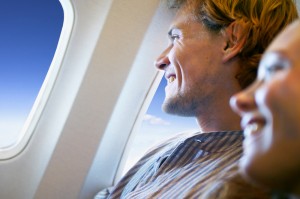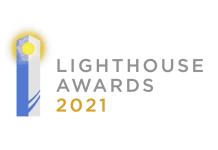
For years I have collected miles with a few different airlines, but have managed to fly only twice using my miles. Here, in one sentence, you have the problem with airline loyalty programs, but also my loyalty strategy.
Airlines want you to fly with only them and collect miles. But they really don’t want you to use the miles to fly – or so it would seem from the way the programs are structured. It is a “game” and you need to understand how to play in order to win. In fact, modern loyalty programs are morphing based on gamification techniques. More on this later.
Flawed Loyalty Strategy
Having been treated to a Loyalty101 class by an American colleague, I’ve discovered I’m doing it wrong. First, you need to fly with just one carrier, no matter how inconvenient it may be in terms of routing, to make sure that you are at the highest level in the loyalty program. These high levels are the only place you get real benefits. My loyalty mentor has over 1 million miles on United and gets access to lounges, automatic upgrades, and priority access to seats. And on every upgraded flight, she collects miles at a higher rate – like compound interest. So she will happily take United flights which include a change rather than take a direct flight with an alternative carrier.
I probably have earned as many miles as her collectively and had 100,000s expire. But I am only Silver on British Airways, Silver on Virgin and nothing on United. And this is a flawed strategy on my part. Years of choosing based on price and route rather than being single-mindedly loyal has hurt me significantly.
Perhaps if they all merged, I would be able to consolidate my miles. However, there is more chance of me getting my own jet than Virgin merging with British Airways!
Let me use my miles. Reward me.
 A case in point is a recent flight from Washington DC to London. I was in Premium Economy on an overnight flight with a busy day ahead of me when I landed. I have a load of miles I would have happily traded for an upgrade and a flat bed. I even had the right class of seat that could be upgraded, but the only Business Class seats that were eligible for miles were booked by tourists probably 6 months earlier. I defy anyone to book a flight using miles less than 6 months ahead of the flight. But my work schedule does not allow me that level of planning. The few miles-related seats go instantly. British Airways is not alone in this either.
A case in point is a recent flight from Washington DC to London. I was in Premium Economy on an overnight flight with a busy day ahead of me when I landed. I have a load of miles I would have happily traded for an upgrade and a flat bed. I even had the right class of seat that could be upgraded, but the only Business Class seats that were eligible for miles were booked by tourists probably 6 months earlier. I defy anyone to book a flight using miles less than 6 months ahead of the flight. But my work schedule does not allow me that level of planning. The few miles-related seats go instantly. British Airways is not alone in this either.
Back to my Washington DC – Heathrow flight. How galling was it to walk through Business Class and discover it was half empty. A truly proactive loyalty program would have offered me an upgrade which would have achieved 3 things:
- used up my balance of miles without costing British Airways anything, as the seats were empty and once the plane took off would never be full
- given me a taste of Business Class potentially getting me to upgrade with money next time
- made me feel that the British Airways loyalty program was working for me, encouraging me to spend more time on British Airways
Instead, it was a negative experience full of wasted opportunity.
The technology is available to generate proactive decisions either at check-in or during boarding, but it seems that airline program has not moved on in the last 20 years. While all around them retailers have embraced gamification and created innovative programs which make the airlines look even more like luddites.
The Future, Now: The North Face
Look no further than The North Face, where the VIPeak program rewrites the way customers are engaged around their passions and not just their purchases. The North Face knew that staying competitive in the tough world of retailing required a new look at the customer and what creates a more enjoyable and meaningful experience. This was ultimately the only way to create a greater lifetime customer value for the brand.
As consumers experience programs like that of The North Face, the novelty of simply earning points based on purchases goes away. New and innovative programs are opening the customers’ eyes and setting new expectations. Loyalty is the new field of competition.
This means loyalty has become something much more dynamic than in the past. It has to evolve with the consumer and the competition. It stops being a hard-coded application, implemented and changed with teams of technology people, and becomes a platform that faces the business—flexible, nimble and cloud-based.
People, Process, Technology
Reinventing loyalty means more than a clever program. It requires changes to virtually all customer-facing processes and also some back-office processes. This also means many people in the organization will have their jobs tweaked or dramatically changed. Suprisingly, the easy bit is the technology. There are applications focused on loyalty such as Loyalty Lab which was recently acquired by TIBCO.
As part of that acquisition, TIBCO gained a team of consultants who have lived and breathed loyalty for years. If you want to gain insights into the changing world of loyalty, they have recorded a webinar called Customer Loyalty Management: Marrying the Art and Science of Loyalty. http://forms.loyaltylab.com/webinar_clm_access to listen to the recording.
Practical Ideas
I have promised to give some practical ideas in my articles rather than just rant. Some of the benefits of the higher tiers of airline programs are when you are on the ground, but make a difference to your experience in the air: priority booking seats, buying seats with leg room, using the airport lounge, using the fast track security and immigration channel. I would happily use my miles to buy an upgrade from Red/Blue to Silver or Gold. The cost, or lost revenue, to the airline is minimal. It is easy to implement. And it will drive up loyalty – which is what the loyalty program is meant to do. There is a clue in the name.
Finally, a Master Class in Loyalty from Ferrari
Ferrari has just released their latest supercar, the oddly named LaFerrari, at the Geneva motorshow. It is an arms race between them, Maclaren, Porsche and Lamborghini. LaFerrari has 963 bhp, approximately 4 times the power of your Golf GTi . But forget the stupid performance statistics. Instead ,lets examine the inspired sales strategy. There are some clever loyalty principles at play when you understand their strategy.
At a price of 1 mllion Euros and only 499 available it guarantees exclusivity and drives up demand. 350 have already been bought. But to buy one you have to have at least 5 Ferraris in your garage at the moment which means it is only being sold to collectors, not speculators, so there won’t be used models or pre-ordered cars hitting the second-hand market which hurts brand reputation. Inspired.





